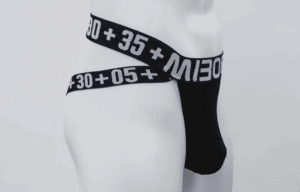How to Test Clothing for Color Fastness & Bleeding
-
 By
Sophia Grant
By
Sophia Grant
Have you ever taken your freshly laundered clothes out of the washing machine just to realize there’s a smudge of color on the fabric?
It’s a common problem.
Fortunately, there’s an easy fix – you just have to separate your clothes based on color before putting them in the washer. To be more specific, you want to have a pile for light colors and a pile for dark colors. That will prevent the dyes from transferring from one item to another.
Different Types of Dyes Used in Clothing
 Different dyes have different fastness ratings and color characteristics. For example, some will be more likely to transfer than others due to their composition.
Different dyes have different fastness ratings and color characteristics. For example, some will be more likely to transfer than others due to their composition.
Here are the two main types that you need to know about:
Natural Dyes
Natural dyes are derived from natural sources such as roots, berries, leaves, woods, minerals, and invertebrates.
While their use has declined over the past few decades, interest in them has been revived in recent years as they are more environmentally friendly than their synthetic counterparts.
They do have a few downsides, though. For one thing, they have relatively poor light fastness, meaning they tend to fade easily when exposed to light.
Not only that but many also have little affinity for textile materials. Because of this, many have to be combined with heavy-metal salts.
Synthetic Dyes
Synthetic dyes are manufactured and made from synthetic resources such as petroleum by-products and chemicals.
Some of the most common types include acid dyes, azoic dyes, direct dyes, disperse dyes, pigment dyes, sulfur dyes, and reactive dyes.
Compared to natural dyes, the colors are longer lasting. They’re also easy to make and are available in a wide range of colors.
However, they’re not the best for the environment. During the coloration process, it’s not uncommon for some of the dyes to enter the waterways, and that can have significant consequences for marine life.
What is Colorfastness?
 The terms color fastness or washfastness refers to how resistant a certain material is to bleeding or fading. Aside from the type of dye used, other factors determine its colorfastness.
The terms color fastness or washfastness refers to how resistant a certain material is to bleeding or fading. Aside from the type of dye used, other factors determine its colorfastness.
For example, the type of fabric matters. Take cotton or linen, for instance, they are generally poor at retaining colors compared to synthetic fibers such as polyester or viscose.
How to Test Fabric For Washing Fastness
Most types of colored fabric, assuming that they’re made properly during the dyeing process, should be stable in terms of color; you shouldn’t have to worry about them releasing dyes when they’re put in the wash.
However, not all fabrics are made equal and some will inevitably release dyes when immersed in water. For this reason, it’s important to conduct a color fastness test before washing your clothes.
Testing Fabrics For Color Fastness
Locate an inconspicuous area on the garment (e.g. hem or seam), and submerge that part of the item into a sink of lukewarm water. You can add a bit of detergent if you wish, but it’s not necessary.
 Let the dyed material sit in the water for up to 30 minutes. After soaking, check to see if any of the dye has seeped into the water. If there’s any discoloration, there’s a high chance that the dyes will bleed onto your other clothes in the wash.
Let the dyed material sit in the water for up to 30 minutes. After soaking, check to see if any of the dye has seeped into the water. If there’s any discoloration, there’s a high chance that the dyes will bleed onto your other clothes in the wash.
If necessary, you can also perform a second test. Without rinsing, remove the garment from the water and place it on a clean paper towel. Allow it to sit on the surface for a few minutes.
Check to see if any of the dyes have transferred onto the towel afterward. If it’s stained, there’s a high possibility that the dye will also transfer onto your adjacent garments in the washing machine.
Similarly, you can use grey scales during color fastness testing.
Setting the Dye In Clothes
There are several ways to “set” the dyes in your clothes. Keep in mind, however, that the results will vary depending on the type of fabric dye you’re dealing with.
Use a Commercial Dye Fixative Product
 Dye fixative products can be found in most department stores. They’re designed to make the dyes on your clothes more permanent, reducing the risk of dye transfer between colored fabrics.
Dye fixative products can be found in most department stores. They’re designed to make the dyes on your clothes more permanent, reducing the risk of dye transfer between colored fabrics.
While it depends on the exact product, most involve soaking the fabric in the solution before washing it for the first time.
Pro-tip: You can add 1/4 cup of table salt for extra color-retaining power.
Use White Vinegar
White vinegar is not only good for eating and cleaning but it can also be used to lock in color.
Start by filling a large bowl with clean water. Add a cup of vinegar and swirl the liquid around a few times to mix. Once it’s combined, place the garment into the water, ensuring it’s fully submerged.
For the best results, let it soak in the solution for at least 24 hours. Don’t be alarmed if you see a little bit of color in the vinegar solution – that’s normal.
Remove the item once it’s been soaked and rinse with clean water. You can do this by refilling the bowl with clean water and placing the garment back in. Repeat the soaking if you notice any color in the vinegar water.
Use a Salt Water Mixture
Start by filling a tub or bucket with a gallon of lukewarm water. Add a cup of salt and mix until it’s completely dissolved.
Place the item in the salt solution and let it soak for a few hours. Ideally, you want to do this before the first wash.
Once it’s soaked, take the garment out and rinse it with water. Wash it as usual by hand or by putting it in the washing machine.
Pro-tip: For extra color protection, you can add a quarter cup of salt to the wash cycle.
Best Ways to Prevent Color Bleeding
 You can prevent the dyes from fading by doing a few things:
You can prevent the dyes from fading by doing a few things:
- Do not wash your garments with hot water. The high heat can wash out the mordant, the substance that’s used to set dyes on fabric
- Be careful when you’re washing your clothes. For example, you should never overcrowd the washer – that will increase the risk of damage by friction.
- Skip harsh detergents; go for an all-natural product such as ACTIVE Detergent instead
- Do not use any bleaching products
- Do not expose your clothes to the sun as the UV rays can cause the fabric surface to fade
Testing For Color Fastness – FAQs
How can you tell a fabric for color fastness?
Submerge an inconspicuous area (e.g. seam, hem) into cold or warm water and let it sit for 15 to 30 minutes. If the water changes color, it will likely cause dye transfer in the wash.
You can also use other test methods such as the gray scale method.
How can you improve color fastness?
You can make the dyes on your clothes more permanent with a commercial dye fixative product.
How can you prevent colors from bleeding when you’re washing your clothes?
Make sure to separate your laundry based on color; you should have one pile for light-colored items and another for dark-colored items.
We also recommend using a laundry bag when machine washing to protect your clothes from fading.
15% Off Amazon Coupon
×Click To Reveal The 15% Off Coupon Code For Your Entire ACTIVE Purchase At Amazon.com
Note: This promotional offer is only guaranteed through the end of the day.




